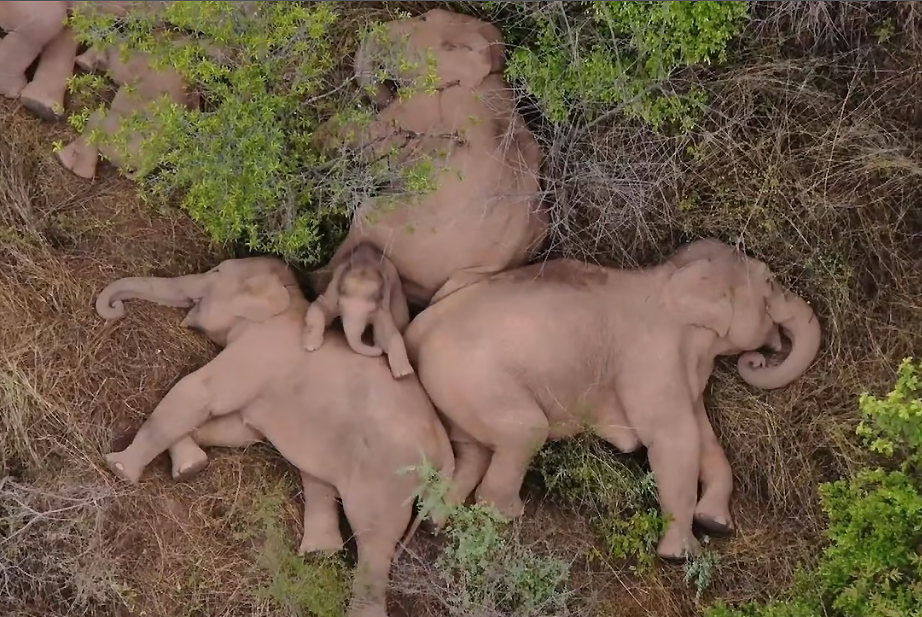
Habitats suitable for elephants in Asia have shrunk by almost two-thirds over the past three centuries, according to a new study.
It equates to a drop of 3.3 million square kilometres (1.27 million square miles), similar to the size of India, since 1700.
The analysis shows that China has lost 94% of its suitable elephant habitat, the greatest decline in the region, followed by India (86%) and Bangladesh (72%).
Thailand, Vietnam and the Indonesian island of Sumatra have all lost more than half their suitable elephant habitat.
While the study did not look into specific reasons for habitat loss in each country, the team observed a global trend of "a marked conversion of landscapes into more heavily human-dominated spaces".
The researchers from Australia, Britain, Cambodia, Indonesia, Malaysia, the United States and Vietnam published their findings in the peer-reviewed journal Scientific Reports on Thursday.
Lead author Shermin de Silva, founder of the elephant conservation non-profit organisation Trunks & Leaves and an assistant professor in the department of ecology, behaviour and evolution at the University of California San Diego, said Asian elephants thrived in seasonal grasslands, tropical deciduous forests and rainforests if food and drinking water were available.
"Elephants are drawn to agricultural fields and plantations," she said. "Although these areas represent good sources of nutrition, the potential for negative interactions with people renders such areas unsuitable, according to our selection criteria."

As human activity expands into their natural habitats, elephants may come into conflict with humans.
In late 2020, a herd of 15 wild Asian elephants left their normal range in the Mengyangzi Nature Reserve in the southwest corner of the Chinese province of Yunnan to search for new habitats. They travelled nearly 500km (310 miles) and entered the provincial capital of Kunming.
During their months-long journey, the elephants foraged in villages and damaged farmers' crops. To avoid conflicts between the elephants and humans, authorities evacuated 150,000 residents and provided 180 tonnes of food for the elephants.
De Silva said the new study showed that only 5.7% of the existing rangeland, or 135 sq km, of Yunnan province was classified as suitable, meaning "much of the range in which elephants occur might not be considered suitable for them".
"Protected areas in Asia are generally small relative to the needs of elephants and insufficient to fully support elephant populations, so this is very likely the case here as well. We therefore can expect that wildlife will go searching for resources if these limited areas are inadequate," she said.
"There is a real need to increase the amount of habitat available to the existing elephant populations and this should be done gradually, linking and expanding the available habitat."
In recent years, scuffles between elephants and villagers in Yunnan have become more frequent, with reports of crops being destroyed and villagers killed.
The Asian elephant is found mostly in South Asia and Southeast Asia and has been listed as endangered on the International Union for Conservation of Nature's Red List of Threatened Species since 1986.
There are around 44,000 wild elephants in the region, with 60% of them in India. Sri Lanka is home to nearly 6,000 elephants, while Malaysia has almost 2,300.
The species is under first-level protection in China, the country's strictest for wild animals. There are about 300 wild elephants in the most biodiverse province of Yunnan.
"The loss of suitable habitat we show is obviously much more recent than the time frame over which elephants as a species have been losing ground in China," de Silva said.
"Although in our study we cannot point to the causes, we have to of course wonder how the domestic demand for ivory would have played a role in this if it is responsible for elephant declines in other parts of the world."
China banned the domestic trade and processing of ivory in late 2017. While both male and female African elephants have tusks, among Asian elephants only some males grow them.






